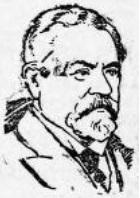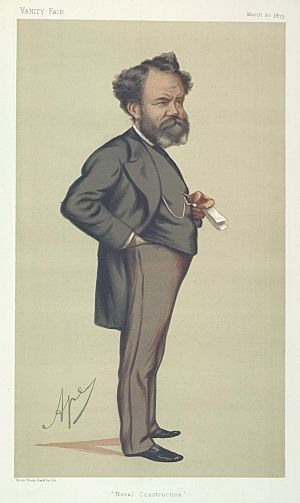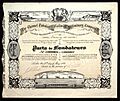Edward Reed (naval architect) facts for kids
Quick facts for kids
Sir
Edward James Reed
|
|
|---|---|

1895
|
|
| Member of Parliament for Pembroke |
|
| In office 1874–1880 |
|
| Preceded by | Thomas Meyrick |
| Succeeded by | Henry George Allen |
| Member of Parliament for Cardiff |
|
| In office 1880–1895 |
|
| Preceded by | James Crichton-Stuart |
| Succeeded by | James Mackenzie Maclean |
| Member of Parliament for Cardiff |
|
| In office 1900–1906 |
|
| Preceded by | James Mackenzie Maclean |
| Succeeded by | Ivor Guest |
| Personal details | |
| Born | 20 September 1830 Sheerness, Kent, England |
| Died | 30 November 1906 (aged 76) The Strand, London, England |
| Cause of death | Heart failure |
| Resting place | Putney Vale Cemetery |
| Political party | Liberal |
Sir Edward James Reed (born September 20, 1830 – died November 30, 1906) was a very important British engineer. He designed ships for the navy, wrote books, and was a politician. He was the main ship designer for the Royal Navy from 1863 to 1870. He also served in the British Parliament as a Liberal Party member from 1874 to 1906.
Contents
Who Was Edward Reed?
Early Life and Education
Edward Reed was born in Sheerness, Kent, England. His parents were John and Elizabeth Reed. He started his career as an apprentice in the navy at Sheerness. Later, he studied at the School of Mathematics and Naval Construction in Portsmouth.
In 1851, he married Rosetta. Her brother, Nathaniel Barnaby, was also a student there. Nathaniel later took over Edward's job as the Chief Constructor. After working at Sheerness Dockyard, Edward left due to a disagreement. He then worked in journalism, even editing the Mechanics' Magazine. In 1860, he became secretary of the new Royal Institution of Naval Architects.
Becoming a Top Ship Designer
In 1863, at only 33 years old, Edward Reed became the Chief Constructor for the Royal Navy. This was a time when ships were changing a lot. They were moving from being made of wood to being made of iron.
Under his leadership, many important warships were built. These included:
- HMS Bellerophon (1865): This ship used a new "bracket frame" way of building.
- HMS Monarch (1868): A large warship designed for the open ocean.
- HMS Devastation (1871): This ship was special because it didn't have masts.
Challenges and Resignation
Edward Reed faced a big challenge with Captain Cowper Phipps Coles. Captain Coles was an inventor and a Member of Parliament. He wanted a new battleship built his way, even though Reed disagreed. This ship was HMS Captain.
Because of this disagreement, Reed resigned in July 1870. Just two months later, the Captain sank in a storm. Sadly, almost 500 people, including Captain Coles, lost their lives.
Designing Ships for Other Countries
After leaving the Royal Navy, Edward Reed continued to design warships. He worked for navies in other countries. These included Brazil, Germany, Chile, and Japan. Some of the ships he designed for other nations were later bought by the Royal Navy.
Edward Reed received several important awards for his work. He became a Companion of the Bath (CB) in 1868. In 1880, he was made a Knight Commander of the Bath (KCB). He was also chosen as a Fellow of the Royal Society (FRS) in 1876.
Edward Reed's Political Career
Serving in Parliament
In 1874, Edward Reed was elected to the House of Commons. He represented the area of Pembroke as a Liberal Member of Parliament.
In 1879, Reed visited Japan. The Japanese government invited him. He was there to check on three new warships built in Britain for the Imperial Japanese Navy. These ships were the Fusō, Kongō, and Hiei. Japan also wanted to build stronger ties with important British politicians like Reed. When he returned, Reed wrote a successful book about Japan.
In 1880, he was elected to represent Cardiff. He served in Parliament until 1895. He lost his seat in 1895 but was re-elected in 1900. He decided to retire from Parliament in 1905.
Business Ventures
Florida Railroads
Edward Reed also had a big role in building railroads in Florida, USA. In 1881, he and other investors bought a railroad company. This company ran across Florida from Fernandina to Cedar Key. He reorganized this company and other smaller lines.
He combined several railroad companies into one large firm. This was called the Florida Railway and Navigation Company in 1885. Later, this company became part of the Seaboard Air Line Railroad, which is now part of CSX Transportation.
Channel Tunnel Idea
In 1892, Edward Reed suggested building a railway tunnel under the English Channel. This tunnel would connect England and France. He helped start a company to raise money for this project. The idea was to make travel between the two countries much faster. However, the project did not go forward due to political reasons.
Later Life and Legacy
Edward Reed passed away in November 1906 from heart failure. He was buried in Putney Vale Cemetery. His son, Edward Tennyson Reed, became a famous political cartoonist for Punch magazine.
Works by Edward Reed
Edward Reed wrote several books, including:
- Shipbuilding in Iron and Steel (1868)
- Our Ironclad Ships, their Qualities, Performance and Cost (1869)
- Japan: its History, Traditions, and Religions, with the Narrative of a Visit in 1879 (1880)
- Treatise on the stability of ships (1884)
Images for kids



